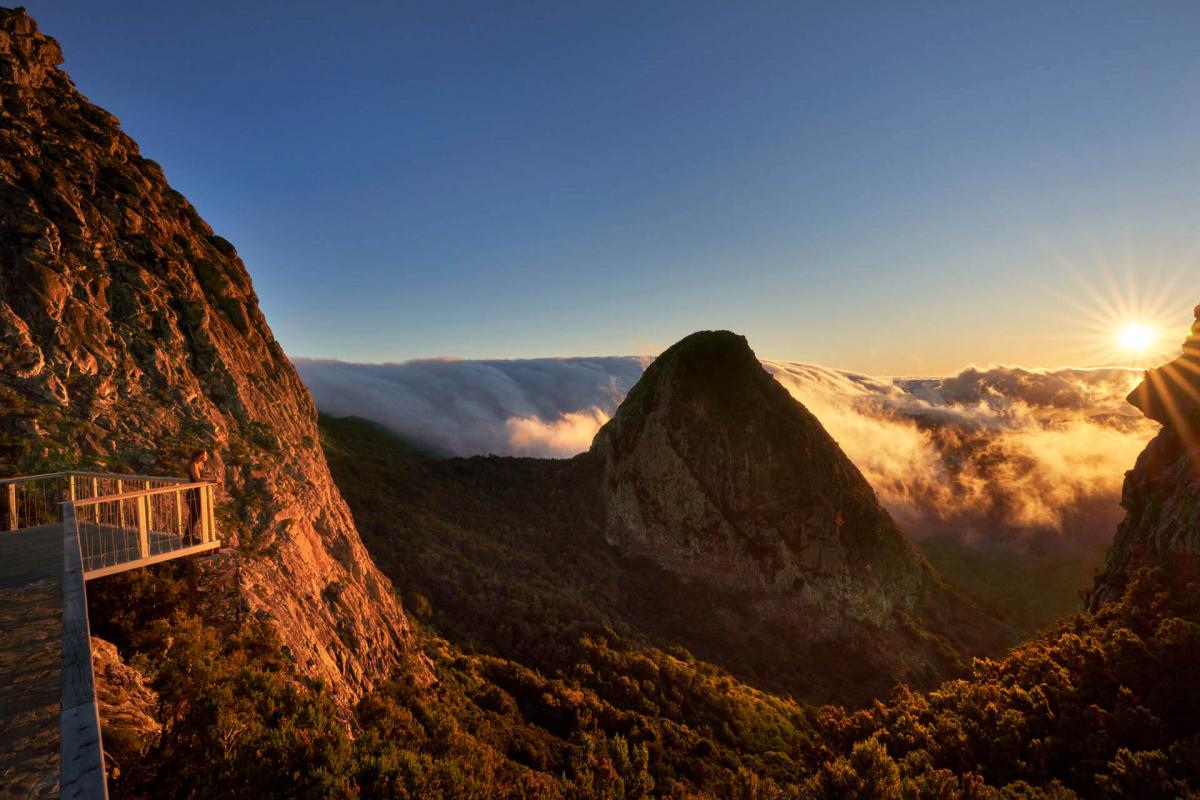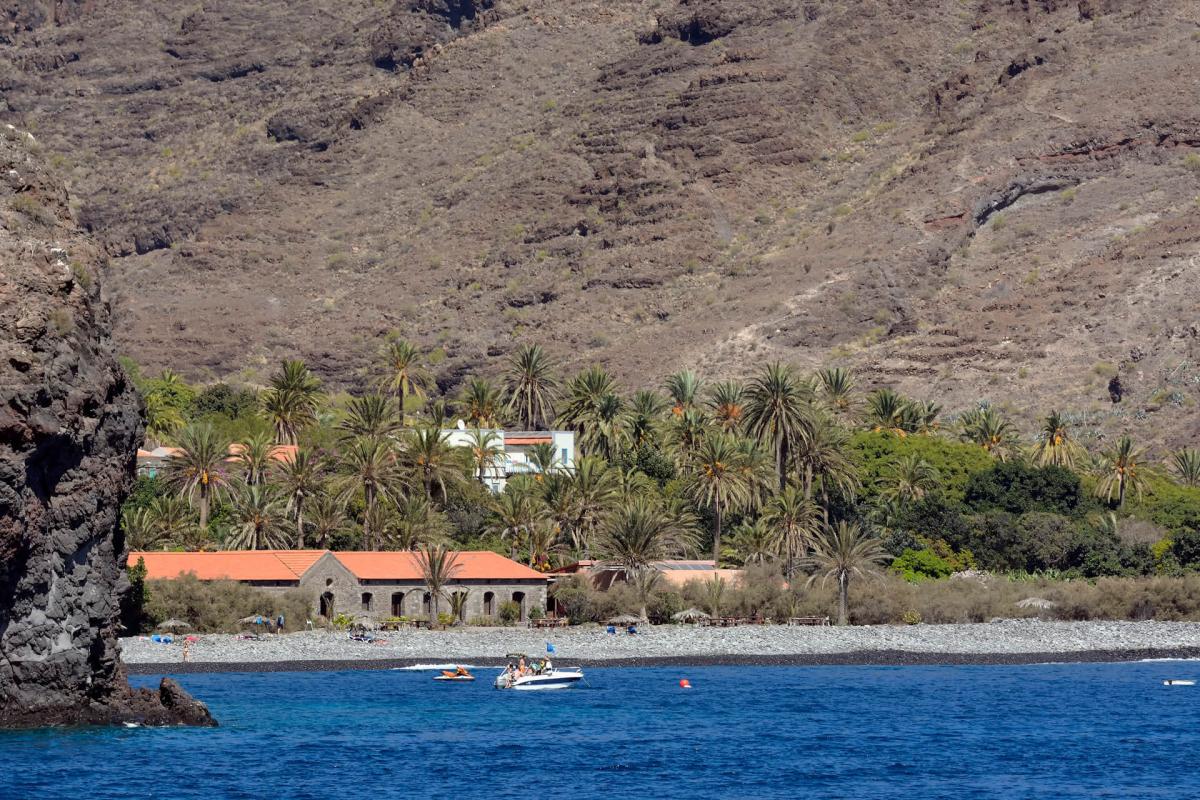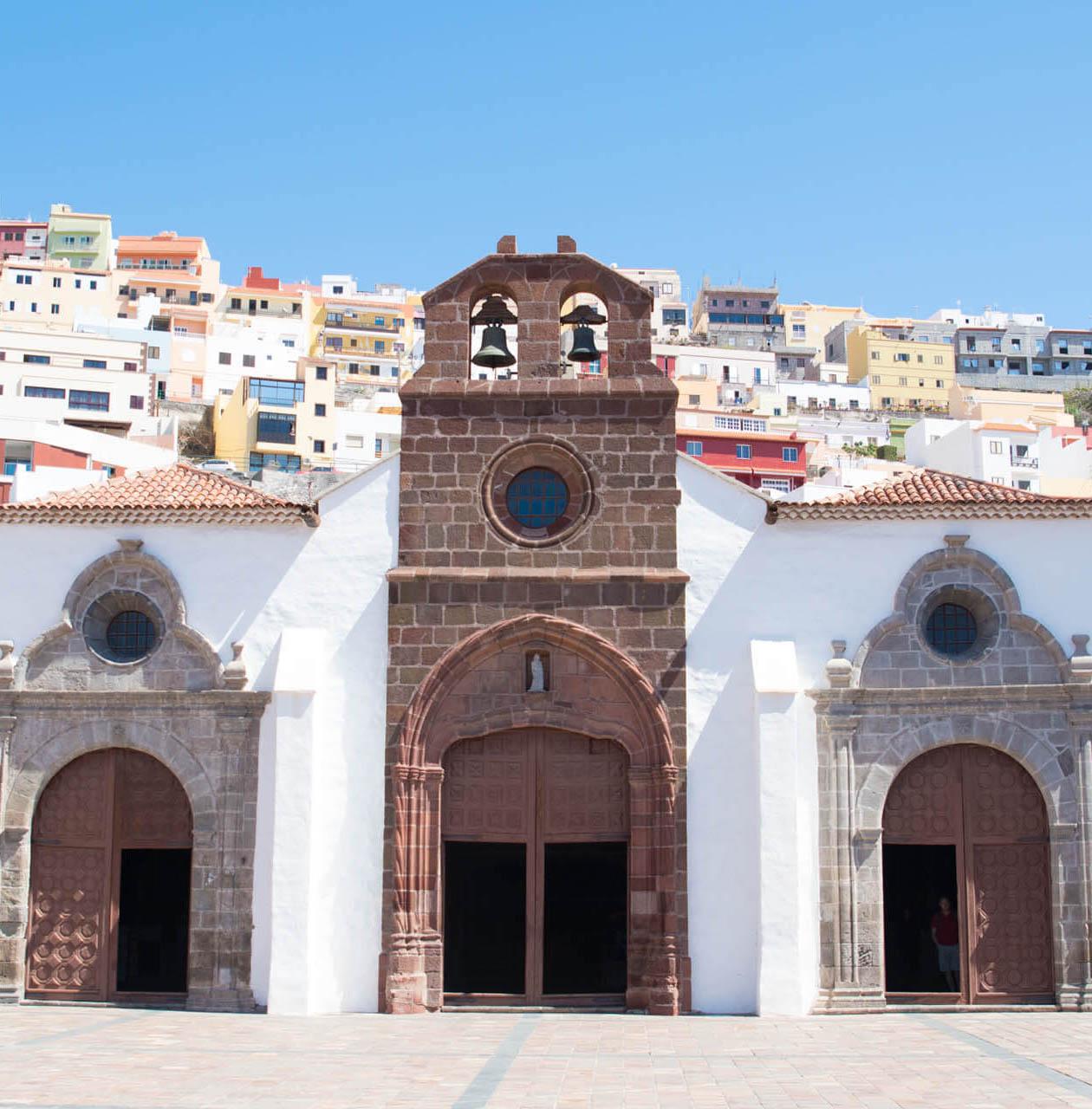San Sebastián de La Gomera, the capital town on the island, is full of tradition, culture and a long history, as well as having a beautiful, perfectly conserved historic quarter and natural spaces that are protected because of their high scientific and scenic worth. All in a calm and inviting environment that will make you feel right at home, with the advantage of a warm climate and stunning beaches nearby.

On the track of Columbus
San Sebastián de La Gomera is the most important city on the island, by size and number of inhabitants. More than 9000 people live here and it is one of the most significant places in the history of La Gomera, and is known locally as La Villa. The historic quarter is a treasure for wandering through amidst colourful houses, open wooden balconies and patios in typical architectural style, as well as all sorts of traditional businesses.
San Sebastián is famous for being the last place in Europe Cristopher Columbus stopped before crossing the Atlantic Ocean on his journey to the New World. The Niña, the Pinta and the Santa María dropped anchor in the port of San Sebastián on 6 September 1492. The house where Columbus stayed has become the Columbus House Museum, full of Pre-Columbian art from Peru and other exhibitions.
A place full of culture with a rich gastronomy, much of its history revolves around Cristopher Columbus’ stay in San Sebastián, such as the Aguada Well, from which he is said to have taken the water that he used to christen America on his arrival there. Outside it is a bust in honour of the ‘faceless admiral’, a nickname often given to Columbus in Spanish, due to the mystery surrounding his origins.
Another must-see stop is the Torre del Conde, a 15th-century fortress where the local lords took refuge during the rebellion on La Gomera. It used to be accompanied by other buildings, but the tower is the only one that remains standing, which is why it was declared a Historic and Artistic Monument in 1990. Also originating from that era, the nearby Church of Asunción is worth a visit too.
Protected spaces
Along with history and culture, San Sebastián also encompasses protected landscapes. Natural spaces that, given their scientific or scenic importance, are of great worth to La Gomera. The Benchijigua Nature Reserve is home to many endemic and endangered species, as well as being one of the most beautiful places in San Sebastián on account of its cliffs, the many different hues of green and its hills and valleys.












Los Roques, which was declared a natural monument in 1994, is located inside Garajonay National Park and is an example of the intrusive volcanism found all over La Gomera. On the divide that separates the hills of La Laja and Benchijugua, it includes the rocks called Agando, Ojila, La Zarcita and Carmona.
Once you come down from the mountain, you can enjoy any of the 13 beaches San Sebastián has to offer. They include El Cabrito Beach, at the bottom of the hill of the same name, and La Cueva Beach, which has a blue flag and a monument to the Olympic torch erected to commemorate the 1968 Olympic Games, in which the La Gomera boxer Marcos Chinea competed and during which the Olympic flame passed through the island. There is another beach with a blue flag just a few metres away: San Sebastián Beach, right in the town and surrounded by services and infrastructure. Beaches for all occasions.
The festive hub of the island
In the Puntallana area of San Sebastián, we find the shrine to the Virgen de Guadalupe, the patron saint of La Gomera. The ‘Fiestas Lustrales’ in honour of the virgin is one of the most noteworthy events on the island and takes place on the first Monday of October every fifth year. The shrine to Saint Sebastian, the patron saint of the town, can also be found in San Sebastián. The local celebration in his honour takes place on 20 January.
Additionally, coinciding with the anniversary of Cristopher Columbus’ arrival on 6 September, San Sebastián and the whole island bring summer on the island to an end with a week of celebrations to commemorate the sailor’s arrival here and the importance of the island in the discovery of America. A date for the diary for locals and tourists alike.





